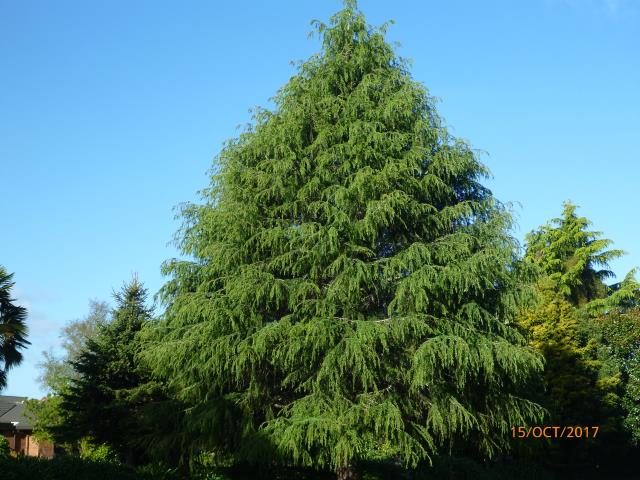
Cedrus deodara
As its name suggests the deodar is native to the Western Himalayas in eastern Afghanistan, northern Pakistan and India, southwest Tibet and Nepal. It usually grows at altitudes of 1500 to 3000 metres in mixed forests with other conifers and broadleaf trees such as oak, chestnut, maple and birch. At maturity the deodar may reach 50 or 60 metres in height, and the oldest known living one is 745 years. Both drought and cold hardy, it has an attractive pyramidal form with pendulous branch tips, beautifully demonstrated by this specimen growing in Lamb St.
In India the deodar is a sacred tree; its Sanskrit name, devadaru, means wood of the gods. Hindu legends frequently refer to the tree, and deodar forests were favourite dwelling places for Indian sages. It is used in Ayurvedic medicine and aromatherapy; the essential oil of the inner wood is effective as insect repellent and fungicide. This inner wood is used in buildings for storing meat, spices and grain. Although deodar is a brittle wood it is rot-resistant and was therefore in demand for building, especially for temples, and also houseboats. It is close-grained and will therefore take a high polish. During the British colonial period deodar was used to construct barracks, public buildings, bridges, canals and railway carriages. Today in the West the deodar is usually an ornamental tree, but in New Zealand it is also often used for shelter on dry slopes.

